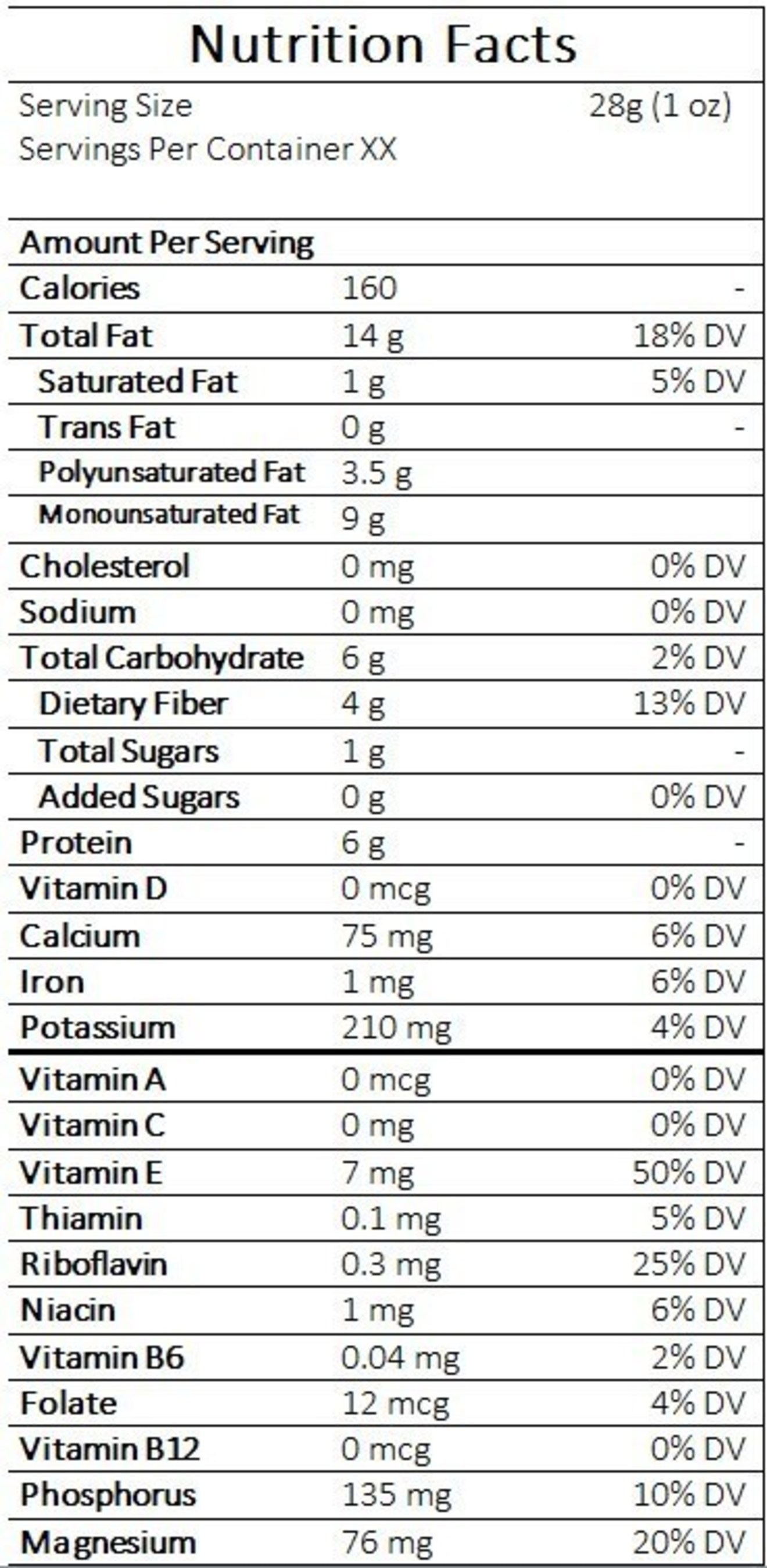Almonds Are An Excellent Source Of Vitamin E And More
Along with being acknowledged as a healthy food by FDA, the new Nutrition Facts Panel showcases the increases in %DV in key nutrients naturally found in almonds
MODESTO, Calif., Oct. 20, 2016 /PRNewswire/ -- Following up on the recent announcement from FDA about new guidance on the term healthy, and how almonds–full of naturally good fats–now meet the updated definition, there's more good nutrition news to share: a one ounce serving of almonds now provides half of the daily needs for vitamin E and is a significant source of magnesium and riboflavin, too.
As a result of changes to the Nutrition Facts panel that went into effect earlier this year, many of the Dietary Reference Intake Values for vitamins, minerals and other nutrients were also updated. The Dietary Reference Intake Values are used to calculate the percent Daily Values (%DV) seen on food packages. Several of those that changed are key nutrients found naturally in almonds. The result of all this is that a healthy handful of almonds is now a good source of fiber (13% DV) and an excellent source of riboflavin (25% DV), magnesium (20% DV) and vitamin E (50% DV).
Each of these nutrients play an important role in good health:
- Vitamin E is an antioxidant that helps protect cells from damage, helps boost the body's immune system and helps to widen blood vessels and keep blood from clotting within them.
- Magnesium helps regulate muscle and nerve function, blood sugar levels and blood pressure.
- Riboflavin is a B vitamin that helps convert food into fuel. It's important for cellular function, growth and development and helps maintain normal levels of homocysteine, an amino acid, in the blood.i
Ounce for ounce, almonds are the tree nut highest in protein, fiber, calcium, vitamin E, riboflavin and niacin. Besides being a nutrient powerhouse, almonds are also gluten-free and low on the glycemic index.
Consumers will start to see these %DV changes on food packages soon, as well as changes to the rest of the Nutrition Facts panel. The final rule includes numerous design and formatting modifications, intended to ensure consumers have access to information they need to make informed decisions about their food choices. These include increasing the type size for Calories, Servings per Container and Serving Size declaration, the addition of Added Sugar content on the label, and including the amount, in addition to the percent Daily Value, of vitamin D, calcium, iron, and potassium in a food. Vitamins A and C are no longer required to be declared, but can be voluntarily listed, along with other vitamins and minerals.
Here's how the new Nutrition Facts label for almonds looks:
Please visit the Almond Board of California blog to follow the Almond Board's updates on nutrition.
About California Almonds
California almonds are a healthy, natural, wholesome and nutrient-rich food -- high in vitamin E and magnesium, with 6 grams of protein and 4 grams of fiber per one ounce (28-gram) serving. A one-ounce serving of almonds has 13g of unsaturated fat (of which 9 grams are monounsaturated fat and 3.5 grams are polyunsaturated fat) and only 1g of saturated fat.
Almonds are grown by more than 6,500 growers in California's Central Valley, which is the only region in the U.S. able to successfully grow almonds commercially. They're the second most valuable crop in California, and in fact comprise 80 percent of the world's almonds.
The majority of almond farms in California are fewer than 100 acres, and 91 percent are family farms, many operated by third and fourth generation growers. Back in 1950, almond growers decided to combine their resources to found and fund what is now the Almond Board of California, a non-profit Federal Marketing Order that operates under the supervision of the United States Department of Agriculture.
The Almond Board supports growers with a research-based approach to production and marketing. It has funded more than $42 million since 1973 in research related to almond production, quality and safety, nutrition, and environmental aspects of farming. This has led to a number of breakthroughs and a spirit of continual improvement that has helped almond growers be increasingly efficient, productive and responsible with their valuable resources. To learn more about the Almond Board's leadership in water efficiency and management, waste reuse, carbon reduction, bee health and more, visit its blog or almondsustainability.org. To learn more about almonds, visit almonds.com.
i Vitamin E - Office Of Dietary Supplements. (n.d.). Retrieved October 20, 2016, from https://ods.od.nih.gov/factsheets/list-all/VitaminE/
Photo - http://photos.prnewswire.com/prnh/20161020/431055
Photo - http://photos.prnewswire.com/prnh/20161020/431056-INFO
SOURCE California Almonds
Related Links
WANT YOUR COMPANY'S NEWS FEATURED ON PRNEWSWIRE.COM?
Newsrooms &
Influencers
Digital Media
Outlets
Journalists
Opted In


Share this article